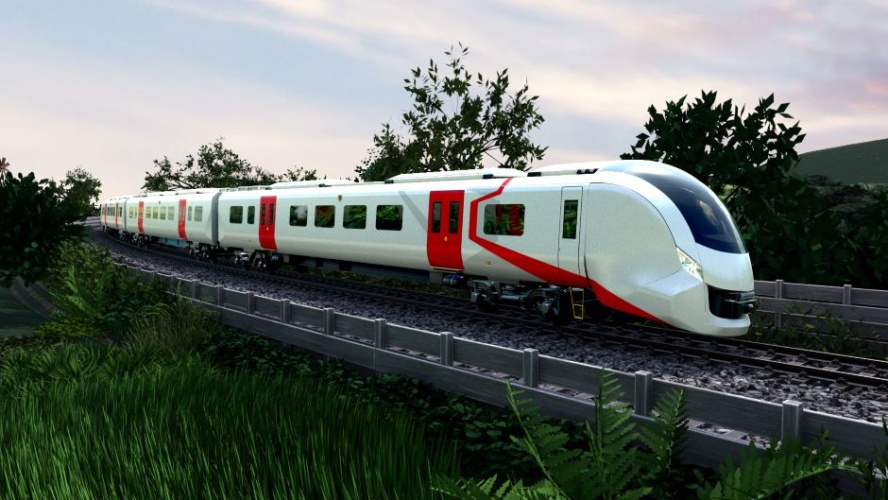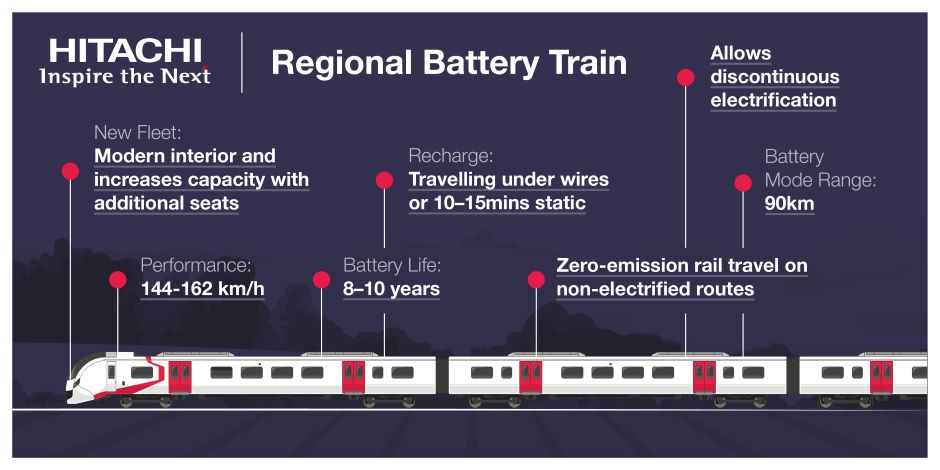
Hitachi Rail analysis estimates the potential market for Hyperdrive and Hitachi’s battery technology is over 400 trains.
Powering up a British battery boom
Hitachi starts work on all-electric 803s for East Coast Trains
“The partnership with Hyperdrive creates shovel-ready opportunity for new battery trains to be ordered now,” said Andrew Barr, Group CEO, Hitachi Rail. “As well as new trains, this is also a window of opportunity to cut carbon and supercharge a green recovery in the North East and across the UK.”
Hitachi has identified its fleets of 275 trains as potential early recipients of the batteries for use in the UK, as well as installing them on new metro and intercity trains.

According to Hitachi, a widespread adoption of battery train technology could help to create a market for Hyperdrive Innovation to increase its manufacturing capability up to 30,000 battery packs per year and double the number of jobs at its HYVE factory in Sunderland.
Development of the UK’s first independent battery pack manufacturing facility is expected to drive costs down and offer domestic production of batteries for rail, automotive, construction and energy sectors.
“Our partnership with Hitachi will secure major investment and jobs in the North East, reinforcing the UK’s battery supply chain and keeping the country on track to reach net-zero by 2050,” said Chris Pennison, CEO, Hyperdrive. “To date, only 42 per cent of UK railways are electrified, with British trains using 469 million litres of diesel each year, emitting over 2.4 million tonnes CO2 annually. The partnership underpins the vision that the rail industry can be a major contributor to the UK government’s target of net zero emissions by 2050 and strengthens the case for home-grown innovation to be at the forefront of the UK’s clean growth strategy.”




Nanogenerator consumes CO2 to generate electricity
Nice to see my my views being backed up by no less a figure than Sabine Hossenfelder https://youtu.be/QoJzs4fA4fo